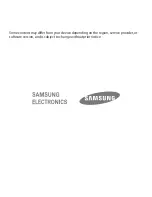
6
Connect Loop Cable or Loop Pad to the amplifier
When the loop cable connector (11) buttons are pushed in a hole will
appear. Push the bare wire into the hole. Ensure that only the bare
wire and not the plastic insulation goes into the hole, then release
the button to lock the cable in place.
Connect Audio Inputs from TV or other Audio Source to Loop Amplifier
Direct audio connections
This is the preferred method of connecting your amplifier to TV and other audio products. It
will deliver the clearest sound to you without background noise affecting the clarity.
This amplifier is fitted with digital and analogue audio inputs.
Digital Optical TOSlink and Coaxial outputs are found on most current TVs and Audio equipment.
These connections (13) & (14) will provide the clearest sound input to your system.
Analogue audio connections use the red/white phono audio connectors (15) & (16) on the loop
amplifier. Analogue audio is widely found on all types of equipment.
Up to 3 pieces of equipment may be directly connected to the loop amplifier at any one time.
One digital using either TOSlink or Coaxial but NOT both at the same time and one or two
pieces of equipment with analogue audio output.
If the TV or other sound source does not have a set of phono connectors then use the SCART
or jack adaptors accordingly to connect the equipment. If you use the jack adaptor you may
find that when plugging into a headphone socket on your TV etc., this turns off the internal
speaker. On some TVs there may be a switch that allows the TV speaker to be left on.
Microphones
If a direct connection is not possible then a microphone can be used to pick up the sound
from a TV or other loudspeaker. Microphones can also be used for someone to speak directly
into the loop system so they can speak directly to the hearing aid user while they listen to
TV. A microphone can be used at the same time as the line inputs to monitor environmental
sounds such as a doorbell or telephone bell.
A microphone can also be used in either a classroom or other public speaking situations.
One or two microphones can be used at the same time using sockets (18) & (19).
A priority function also exists when using a microphone in channel B (19) to override sounds
from any other input to the loop amplifier.

























